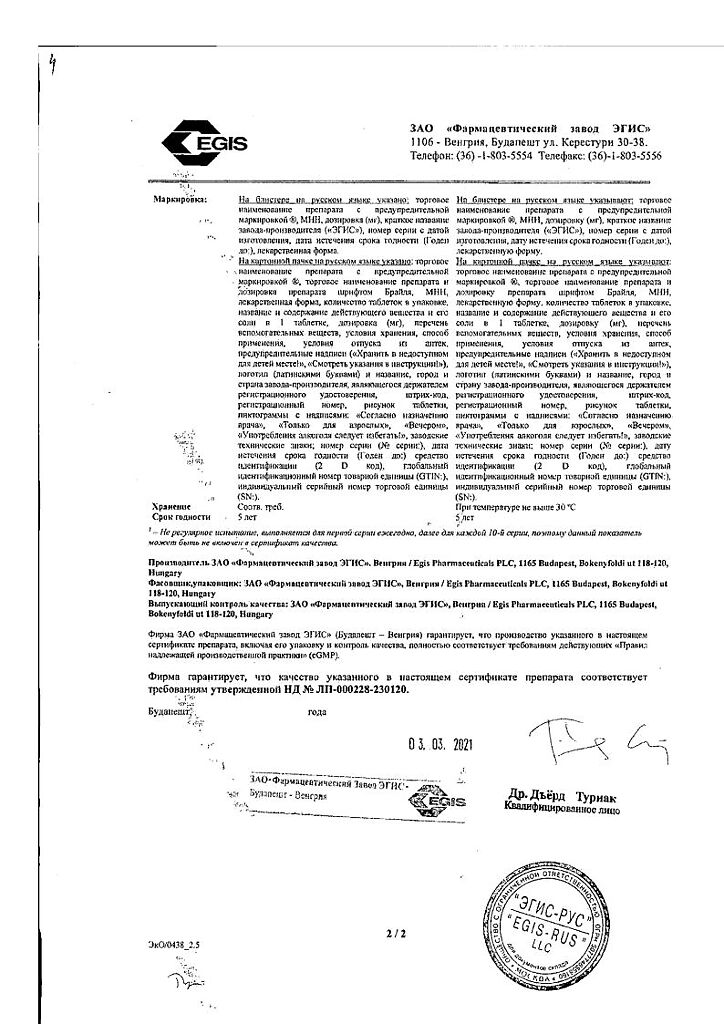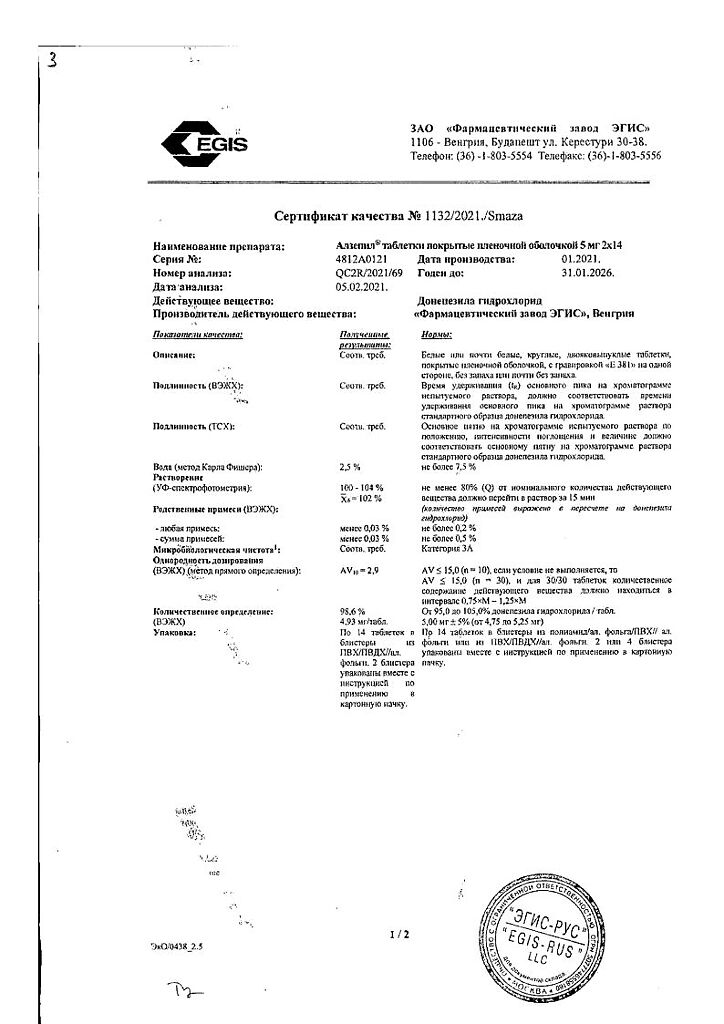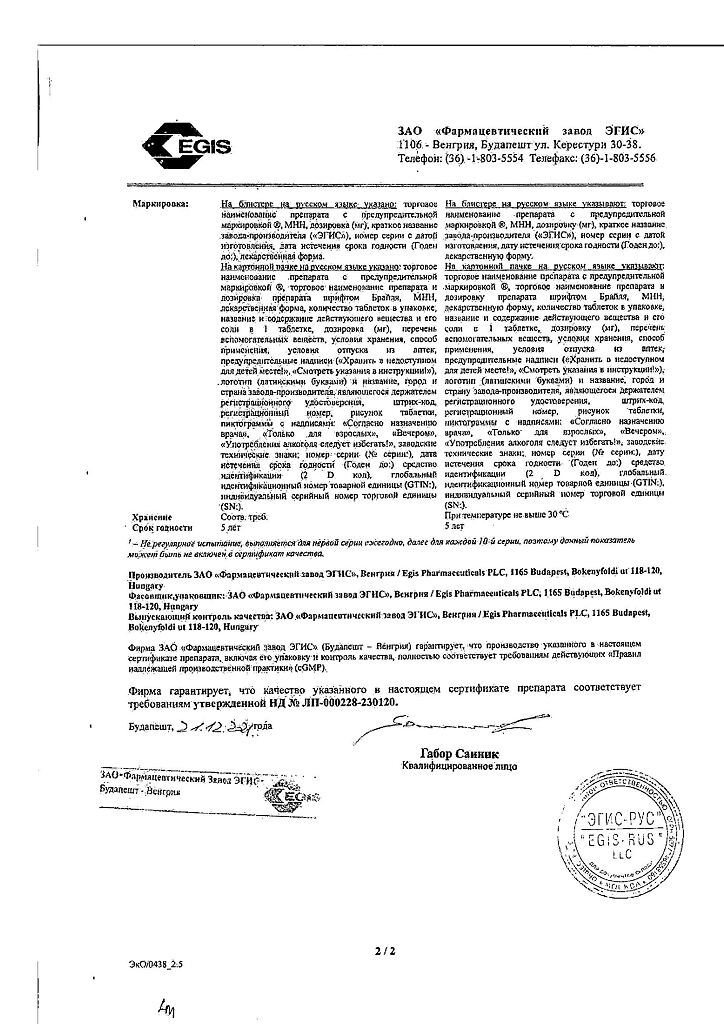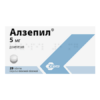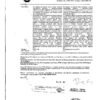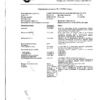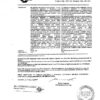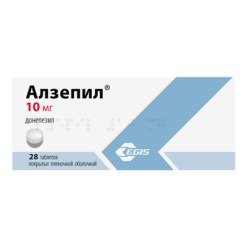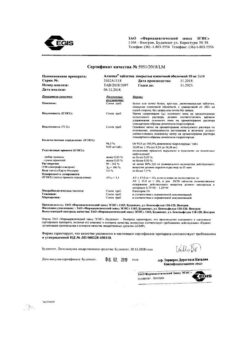No products in the cart.
Alzepil, 5 mg 28 pcs.
€84.72 €70.60
Description
A selective and reversible inhibitor of acetylcholinesterase, which is the main predominant type of cholinesterase in the brain. In vitro, donepezil inhibits this enzyme more than 1,000 times stronger than butyrylcholinesterase, an enzyme that is mainly outside the CNS.
A single dose of 5 mg or 10 mg in equilibrium is accompanied by a 63.6% and 77.3% inhibition of cholinesterase activity (assessed in the erythrocyte membrane model), respectively. The ability of donepezil hydrochloride to inhibit erythrocyte cholinesterase activity correlates with changes in ADAS-cog scores, which is a sensitive tool for assessing changes in cognitive function. The ability of donepezil hydrochloride to change the course of concomitant neurological changes has not been investigated. Thus, donepezil cannot be considered to affect disease progression.
The efficacy of donepezil has been investigated in four placebo-controlled studies, two six-month and two one-year studies.
The six-month clinical trial was analyzed using three efficacy criteria after donepezil was completed. They used the ADAS-Cog scale (a measure of cognitive function); the clinician’s impression of change scale based on interviews and data from caregivers (a measure of overall level of function); and the daily activity subscale of the clinical dementia assessment scale (a measure of the patient’s ability to participate in society, perform household chores, favorite activities, and self-care).
Patients who achieved the criteria below were considered to have responded to treatment.
Response = improvement of at least 4 points on the ADAS-Cog scale, no worsening on the CIBIC scale, no worsening on the Daily Activity subscale of the Clinical Dementia Rating Scale.
| % Response | |||
| Patients who were assigned to treatment (“ITT – Intent to treat”), n=365 | Population whose analysis was possible, n=352 | ||
| Placebo group | 10% | 10% | |
| Group receiving donepezil hydrochloride at a dose of 5 mg | 18%* | 18%* | |
| Group receiving donepezil hydrochloride in 10 mg dose | 21%* | 22%** | |
*p< 0.05, **p< 0.01
Donepezil hydrochloride caused a dose-dependent, statistically significant increase in the percentage of patients who were found to respond to treatment.
Indications
Indications
Symptomatic treatment of mild to moderate Alzheimer’s disease
Pharmacological effect
Pharmacological effect
A selective and reversible inhibitor of acetylcholinesterase, which is the main predominant type of cholinesterase in the brain. In vitro, donepezil inhibits this enzyme more than 1000 times more potently than butyrylcholinesterase, an enzyme that is primarily located outside the central nervous system.
A single dose of 5 mg or 10 mg at steady state is accompanied by inhibition of cholinesterase activity (assessed in the erythrocyte membrane model) by 63.6% and 77.3%, respectively. The ability of donepezil hydrochloride to inhibit erythrocyte cholinesterase activity correlates with changes in ADAS-cog scores, which is a sensitive tool for assessing changes in cognitive function. The ability of donepezil hydrochloride to alter the course of concomitant neurological changes has not been studied. Thus, donepezil cannot be considered to influence disease progression.
The effectiveness of donepezil was investigated in four placebo-controlled studies, two six-month and two one-year.
In the six-month clinical trial, analysis was performed using three efficacy measures after completion of donepezil administration. The ADAS-Cog scale (a measure of cognitive function) was used; a scale of clinician’s impressions of change based on interviews and data obtained from caregivers (a measure of global level of function); the Activities of Daily Living subscale of the Clinical Dementia Rating Scale (a measure of the patient’s ability to participate in society, perform household chores, hobbies, and self-care).
Patients who met the criteria below were considered to respond to treatment.
Response = at least 4 points improvement on ADAS-Cog, no worsening on CIBIC, no worsening on Clinical Dementia Rating Scale Activities of Daily Living subscale.
% Response
Patients who were prescribed treatment (“ITT – Intent to treat”), n=365
Population for which analysis was possible, n=352
Placebo group
10%
10%
Group receiving donepezil hydrochloride 5 mg
18%*
18%*
Group receiving donepezil hydrochloride 10 mg
21%*
22%**
*p<0.05, **p<0.01
Donepezil hydrochloride caused a dose-dependent, statistically significant increase in the percentage of patients who were found to respond to treatment.
Special instructions
Special instructions
Treatment should be prescribed and carried out by a medical specialist with experience in caring for patients with dementia of the Alzheimer’s type. The diagnosis of the disease must be made in accordance with generally accepted criteria (eg, DSM IV, ICD 10). Treatment can only be carried out if there is a person capable of supervising the intake of medications. Treatment is continued as long as there is a therapeutic effect, which should be regularly assessed. If there is no therapeutic effect, the drug should be discontinued. It is impossible to predict the individual response to Alzepil therapy. After discontinuation of the drug, its effect gradually and slowly disappears. There is no information about withdrawal syndrome in case of abrupt discontinuation of the drug.
Active ingredient
Active ingredient
Donepezil
Composition
Composition
1 tablet contains:
Active substance:
donepezil hydrochloride monohydrate – 5.21 mg (corresponding to donepezil hydrochloride – 5 mg)
Excipients:
microcrystalline cellulose – 96 mg,
Low-substituted hydroxypropylcellulose (L-HPC B1) – 24 mg,
magnesium stearate – 1 mg.
Film shell composition:
opadry Y-1-7000 white (hypromellose – 1.875 mg, titanium dioxide – 0.9375 mg, macrogol 400 – 0.1875 mg) – 3 mg.
Contraindications
Contraindications
hypersensitivity (including to pipedine derivatives);
pregnancy (see “Use during pregnancy and lactation”);
lactation period (see “Use during pregnancy and lactation”);
children under 18 years of age (due to lack of clinical data).
With caution: chronic obstructive pulmonary disease, bronchial asthma, cardiac arrhythmias, general anesthesia, gastric and duodenal ulcers, concomitant use of NSAIDs, anticholinergics or other cholinesterase inhibitors.
Side Effects
Side Effects
Nausea, diarrhea, headache, fainting, dizziness, insomnia, fatigue, hallucinations, agitation, aggressive behavior (which stops after reducing the dose or discontinuing the drug), vomiting, upset stomach, urinary incontinence, rash, itching, muscle spasms, anorexia, colds, pain of various localizations, a slight increase in the concentration of muscle cretinin phosphokinase in the blood serum, bradycardia, seizures, gastrointestinal bleeding, gastric and duodenal ulcers, sinoatrial and atrioventricular block, extrapyramidal symptoms, liver dysfunction, including hepatitis.
Interaction
Interaction
Alzepil and/or its metabolites do not inhibit the metabolism of theophylline, warfarin, cimetidine or digoxin.
Overdose
Overdose
Symptoms: cholinergic crisis (severe nausea, vomiting, drooling, sweating, bradycardia, hypotension, respiratory depression, collapse and convulsions). Increased muscle weakness is possible, which can be fatal if the respiratory muscles are affected.
Storage conditions
Storage conditions
The drug should be stored out of the reach of children at a temperature not exceeding 30°C.
Shelf life
Shelf life
5 years
Manufacturer
Manufacturer
EGIS, Hungary
Additional information
| Shelf life | 5 years |
|---|---|
| Conditions of storage | The drug should be kept out of reach of children at a temperature not exceeding 30 ° C. |
| Manufacturer | EGIS, Hungary |
| Medication form | pills |
| Brand | EGIS |
Other forms…
Related products
Buy Alzepil, 5 mg 28 pcs. with delivery to USA, UK, Europe and over 120 other countries.


